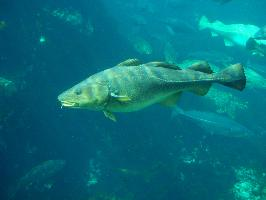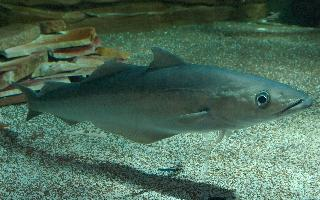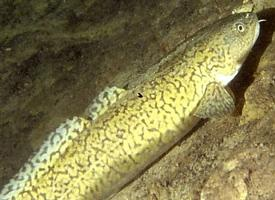
Váhy a míry
| Délka | od 0,8 do 2 m |
|---|
Stav ohrožení
| Ohrožen |
Popis zvířete
The Atlantic cod (Gadus morhua) is a benthopelagic fish belonging to the family Gadidae, widely recognized for its significant role in maritime history, economies, and ecosystems across the North Atlantic Ocean. This species has been a staple in the diet and economy of many North Atlantic countries for centuries, leading to its prominence in both commercial fishing and cultural lore.Physical Characteristics:
The Atlantic cod is characterized by its elongated, torpedo-shaped body, which can grow up to 2 meters (6.6 feet) in length and weigh as much as 96 kilograms (211 pounds), although individuals more commonly measure around 1 meter (3.3 feet) and weigh 5 to 12 kilograms (11 to 26 pounds). Their coloration varies from greenish-brown to grey on their dorsal side, transitioning to a paler, sometimes almost white, belly. This camouflaging coloration helps them blend into the ocean floor habitats where they dwell. Notable physical features include a distinct barbel on the chin, which is used to detect food on the ocean floor, a lateral line that helps in detecting vibrations in the water, and three dorsal fins and two anal fins that provide stability in the water.
Habitat and Distribution:
Atlantic cod are found on both sides of the North Atlantic Ocean. In the west, their range extends from Greenland and the Arctic Ocean southward to the coast of North Carolina in the United States, while in the east, they are found from the Bay of Biscay northward to the Arctic Ocean, including the Baltic Sea, North Sea, and waters around Iceland and the British Isles. They prefer cold, temperate waters and are commonly found at depths of 150 to 200 meters, though they can dwell as deep as 600 meters. Their habitat ranges from the nearshore environments during their juvenile stage to deeper waters as they mature.
Diet:
The diet of Atlantic cod is diverse, reflecting their opportunistic feeding habits. They primarily feed on smaller fish such as haddock, capelin, and sand eels, as well as invertebrates like mollusks, crustaceans, and echinoderms. Their feeding behavior is indicative of their role as a key predator in the North Atlantic marine ecosystem, where they help to maintain the balance of the food web.
Reproduction:
Atlantic cod are known for their aggregating behavior during spawning, which typically occurs between winter and spring, although the timing can vary depending on their geographic location. Females can release several million eggs in a single spawning event, which are then fertilized externally. These eggs are pelagic, drifting with the ocean currents until hatching. The survival rate of cod larvae is low, but those that do survive to adulthood can live up to 25 years, although such longevity is rare in heavily fished populations.
Conservation Status:
The Atlantic cod has faced significant challenges due to overfishing, leading to dramatic declines in population sizes, particularly in the late 20th century. The most infamous case is the collapse of the Northern Cod fishery off the coast of Newfoundland in 1992, which resulted in a moratorium on fishing that has lasted to this day. Efforts to manage and conserve Atlantic cod populations are ongoing, involving quota systems, fishing gear modifications, and protected areas. However, the species is still considered vulnerable, and its recovery is complicated by changing oceanic conditions due to climate change.
In summary, the Atlantic cod (Gadus morhua) is a species of great ecological, economic, and historical significance. Despite facing challenges from overfishing and environmental changes, it remains a symbol of the resilience and complexity of marine ecosystems in the North Atlantic.
Nové fotografie zvířat
Top 10 zvířat
- Chinese water dragon (Physignathus cocincinus)
- Galápagos tortoise (Geochelone nigra complex)
- Dolphin gull (Leucophaeus scoresbii)
- Japanese macaque (Macaca fuscata)
- Colombian red howler (Alouatta seniculus)
- Sea urchins (Echinoidea)
- Moustached guenon (Cercopithecus cephus)
- Diana monkey (Cercopithecus diana)
- Common reed warbler (Acrocephalus scirpaceus)
- Common house mosquito (Culex pipiens)

